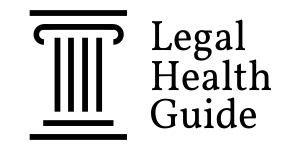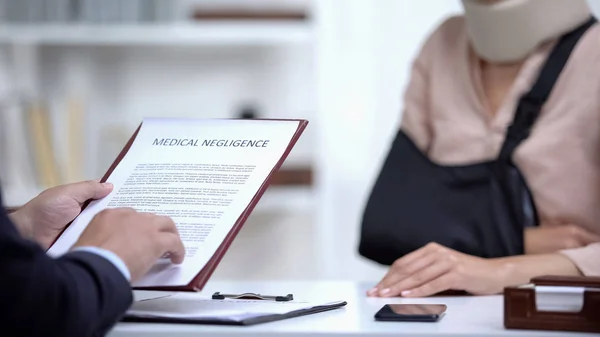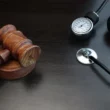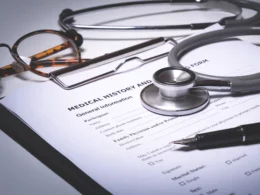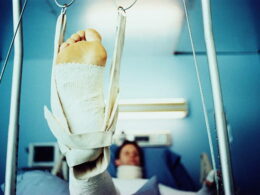Medical negligence is a serious issue that can have devastating consequences for patients. When healthcare providers fail to provide the standard of care expected of them, patients can suffer injuries, illnesses, and even death. Unfortunately, medical negligence is not a rare occurrence.
In fact, it is estimated that medical errors are the third leading cause of death in the United States, behind only heart disease and cancer. While medical negligence can take many forms, there are certain types of cases that are more common than others.
In this article, we will explore some of the most common medical negligence cases, including misdiagnosis, medication errors, surgical errors, and more.
By understanding these types of cases, patients can be better equipped to recognize when they may have been the victim of medical negligence and seek the compensation they deserve.
Additionally, healthcare providers can use this information to identify areas where they may be at risk for medical negligence claims and take steps to prevent them.
Common Medical Negligence Cases
Medical negligence is a civil wrong that occurs when a medical professional fails to provide the expected standard of care, resulting in harm to the patient. Common medical negligence cases include misdiagnosis, failure to diagnose, surgical errors, birth injuries, medication errors, and infections.
1. Misdiagnosis
Misdiagnosis occurs when a medical professional fails to diagnose a condition or diagnoses it incorrectly. This can lead to delayed treatment, incorrect treatment, and further complications. Common misdiagnosis cases include cancer, heart attacks, strokes, and infections.
2. Failure to Diagnose
Failure to diagnose occurs when a medical professional fails to diagnose a condition in a timely manner, leading to further complications and harm to the patient. Common failure to diagnose cases include cancer, heart attacks, strokes, and infections.
3. Surgical Errors
Surgical errors occur when a medical professional makes a mistake during a surgical procedure, leading to harm to the patient. Common surgical errors include wrong-site surgery, leaving surgical instruments inside the patient, and anesthesia errors.
4. Birth Injuries
Birth injuries occur when a medical professional fails to provide the expected standard of care during childbirth, leading to harm to the mother or baby. Common birth injury cases include cerebral palsy, Erb’s palsy, and brain damage.
5. Medication Errors
Medication errors occur when a medical professional prescribes the wrong medication or dosage, leading to harm to the patient. Common medication error cases include overdose, allergic reactions, and adverse drug interactions.
6. Infections
Infections occur when a medical professional fails to provide the expected standard of care in preventing or treating infections, leading to harm to the patient. Common infection cases include hospital-acquired infections and sepsis.
If you have been a victim of medical negligence, you may be entitled to compensation for economic losses, medical expenses, and pain and suffering. It is important to seek the advice of a medical malpractice attorney and expert witnesses to build a strong personal injury case. Punitive damages may also be awarded in cases of gross negligence or intentional harm. If you have any questions, consult with a medical malpractice attorney or review frequently asked questions about medical malpractice cases and damages.
How To Prove Medical Negligence
Proving medical negligence is a complex process that involves several elements. In order to prove medical negligence, you must demonstrate that the healthcare provider had a duty of care, breached that duty of care, and that the breach caused harm to the patient.
In this section, we will discuss the four key elements of proving medical negligence: Duty of Care, Standard of Care, Causation, and Res Ipsa Loquitur.
Duty of Care
The first element of proving medical negligence is demonstrating that the healthcare provider had a duty of care to the patient.
This means that the healthcare provider had a legal obligation to provide care to the patient, and that the provider’s actions or inactions were responsible for the patient’s well-being. For example, a doctor has a duty of care to diagnose and treat their patient’s medical condition.
Standard of Care
The second element of proving medical negligence is demonstrating that the healthcare provider breached the standard of care. The standard of care is the level of care that a reasonable healthcare provider would have provided under the same circumstances.
To prove that a healthcare provider breached the standard of care, you must show that their actions or inactions fell below what a reasonable provider would have done. For example, if a doctor fails to diagnose a patient’s condition that other doctors would have diagnosed, they may have breached the standard of care.
Causation
The third element of proving medical negligence is demonstrating that the healthcare provider’s breach of the standard of care caused harm to the patient. This means that the breach of the standard of care was a direct cause of the patient’s injuries or harm.
For example, if a doctor fails to diagnose a patient’s condition and the patient’s condition worsens, the doctor’s failure to diagnose may have caused harm to the patient.
Res Ipsa Loquitur
The fourth element of proving medical negligence is demonstrating that res ipsa loquitur applies. Res ipsa loquitur is a legal doctrine that allows a plaintiff to prove negligence without direct evidence of a breach of the standard of care.
To apply res ipsa loquitur, you must show that the injury would not have occurred without negligence, that the healthcare provider had exclusive control over the situation, and that the injury was not caused by any other factors.
In summary, proving medical negligence requires demonstrating that the healthcare provider had a duty of care, breached the standard of care, caused harm to the patient, and that res ipsa loquitur applies.
It is important to note that each case is unique, and the elements required to prove medical negligence may vary depending on the circumstances. If you believe that you have been a victim of medical negligence, it is important to consult with an experienced medical malpractice attorney who can help you understand your legal rights and options.
Legal Aspects of Medical Negligence
When it comes to medical negligence, there are several legal aspects that healthcare providers need to be aware of. This section will cover some of the most important legal considerations in medical negligence cases.
Tort Law
Tort law is the area of law that deals with civil wrongs, such as negligence. In medical negligence cases, tort law is used to determine whether a healthcare provider was negligent in their care of a patient. To prove negligence, the plaintiff must show that the healthcare provider breached their duty of care to the patient, and that this breach caused the patient harm.
Medical Malpractice Lawsuits
Medical malpractice lawsuits are a common way for patients to seek compensation for medical negligence. These lawsuits can be complex and expensive, and require the expertise of a medical malpractice attorney. If you are facing a medical malpractice lawsuit, it is important to have a good understanding of the legal process and your rights as a healthcare provider.
Compensation for Medical Negligence
If you are found to be negligent in your care of a patient, you may be required to pay compensation to the patient. This compensation can include both economic damages (such as medical expenses and lost wages) and non-economic damages (such as pain and suffering). The amount of compensation awarded will depend on the severity of the harm caused to the patient.
Other important legal considerations in medical negligence cases include informed consent, adverse events, documentation, communication, and referral. It is important to be aware of these issues and to take steps to minimize the risk of medical negligence in your practice.
To sum up this section, medical negligence is a serious issue that can have significant legal consequences for healthcare providers. By understanding the legal aspects of medical negligence, you can take steps to protect yourself and your patients from harm.
Preventing Medical Negligence
As a healthcare professional, preventing medical negligence is crucial to ensure the safety and well-being of your patients. There are several steps you can take to minimize the risk of medical negligence.
Expert Communication
Effective communication is key to preventing medical negligence. As a healthcare professional, you must communicate clearly and openly with your patients, their families, and other healthcare providers involved in their care. You must also ensure that you have a clear understanding of your patient’s medical history, current health status, and any ongoing treatments or medications.
Documentation and Medical Records
Accurate and complete documentation is essential to prevent medical negligence. You must document all aspects of your patient’s care, including assessments, treatments, medications, and any adverse events that occur. It is also important to ensure that medical records are up-to-date, easily accessible, and securely stored.
Adverse Event Reporting
Reporting adverse events is critical to preventing medical negligence. As a healthcare professional, you must report any adverse events that occur during your patient’s care. This includes medication errors, complications during procedures, and other adverse events. Reporting these events allows healthcare providers to identify and address any systemic issues that may contribute to medical negligence.
Patient Advocacy
Advocating for your patients is an important part of preventing medical negligence. You must ensure that your patients receive the highest quality of care and that their rights and interests are protected. This includes advocating for their safety, privacy, and informed consent.
By following these steps, you can help prevent medical negligence and ensure the safety and well-being of your patients. As a healthcare professional, it is your responsibility to take proactive steps to prevent medical negligence and provide the highest quality of care to your patients.
Conclusion
In conclusion, medical negligence cases can have serious consequences for both patients and healthcare providers. It is important for healthcare providers to maintain a high standard of care to avoid any potential negligence claims. By understanding the common types of medical negligence cases, healthcare providers can take proactive measures to prevent them.
Some common types of medical negligence cases include misdiagnosis, surgical errors, medication errors, and failure to obtain informed consent. Misdiagnosis can occur when a healthcare provider fails to diagnose a patient’s condition or diagnoses it incorrectly. Surgical errors can include performing the wrong procedure or leaving surgical instruments inside the patient’s body. Medication errors can occur when the wrong medication or dosage is prescribed or administered. Failure to obtain informed consent can occur when a healthcare provider does not adequately inform the patient of the risks and benefits of a procedure.
To avoid these types of medical negligence cases, healthcare providers can take several steps, including:
- Properly training and educating staff on patient safety and medical procedures.
- Implementing policies and procedures to ensure proper medication administration and surgical protocols.
- Ensuring clear and effective communication with patients and their families.
- Properly documenting all medical procedures and patient interactions.
- Conducting regular audits and quality assurance checks to identify potential areas of improvement.
By taking these proactive measures, healthcare providers can help prevent medical negligence cases and ensure the safety and well-being of their patients.
YOU SHOULD ALSO READ:
